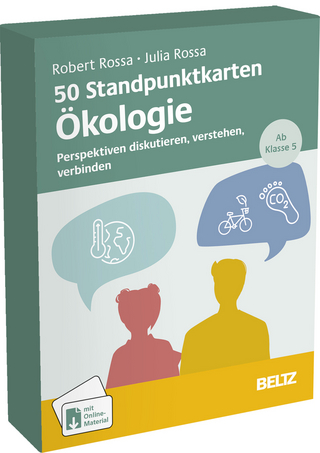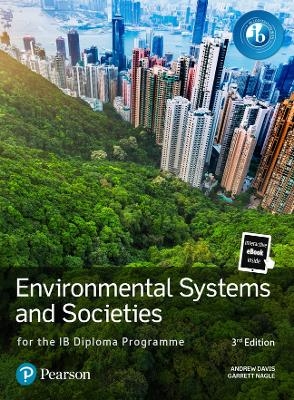
Handbook of Indoor Air Quality
Springer Verlag, Singapore
978-981-16-7681-9 (ISBN)
- Titel wird leider nicht erscheinen
- Artikel merken
Yinping Zhang, Ph.D, is professor of Institute of Built Environment, Tsinghua University, Beijing, 100084, China. He is now the chairman of Association of Indoor Environment and Health of China, dean of Beijing Key Laboratory of Indoor Air Quality (IAQ), Head of Building Environment Test Center, Tsinghua University, vice-president of Standard Committee of Built Environment of China, and Fellow of Inter. Academy of Indoor Air Science. Zhang got his Bachelor degree (1985), Master degree (1988) and Ph.D degree (1991) in University of Science and Technology of China (USTC). He was the assistant professor (1991.10-1993.10), associate professor (1993.10-1997.10), and a deputy chairman of Department of Thermal Science and Energy Engineering (1992.3-1997.10) in USTC; associate professor (1993.10-1997.7), full professor (1999.7-now), deputy director (1998.9-2008.9) and director (2008.9-2014.9) of Institute of Built Environment, Tsinghua University. He was a visiting scholar or professor in Stuttgart University, Germany (1994.5-95.5), Tokyo University, Japan (1996.10-12), and Technique University of Denmark (DTU) (2004.10-12) and the Otto Monsted visiting professor of DTU, Denmark (2007/2008, 3 months). His research interests are indoor air quality and building energy efficiency. He is the PI of over 40 research projects whose budgets are over 10 million US$. He has published 10 books or book chapters, over 170 papers in international journals including J. of American Medical Association-Internal Medicine, Environ. Health Perspective, Applied Catalysis B: Environmental, Environ. Sci. and Technol., and Indoor Air. The h index is 39 on Web of Science Core Collection. He is editor-in-chief or key member of editorial boards of over 10 Chinese IAQ related standards. He has given 20 plenary or keynote speeches in Inter. Conf. including the 11 th, 13 th and 14 th Inter. Conf. of Indoor Air (Copenhagen, Denmark, 2008; Hong Kong, China, 2014; Ghent, Belgium, 2016) and the Inter. Conf. of Energy Storage (Beijing, 2015). He is serving as associate editor of Energy and Buildings, member on editorial boards of other 6 inter. journals i.e., Indoor Air, Building and Environment, PLoS ONE, Inter. J. of Low Carbon Technol., Inter. J. of Transport Phenomena, Frontier of Architecture Research. He has received a series of awards such as Outstanding Young Researcher Award of NSFC (2007), the 1 st Prize of Natural Science of Ministry of Education of China (2010) and the 2 nd Prize of Ministry of Education of China (2005). Dr. Philip K. Hopke is the Bayard D. Clarkson Distinguished Professor Emeritus at Clarkson University, and former Director of the Center for Air Resources Engineering and Science (CARES), and former Director of the Institute for a Sustainable Environment (ISE). He is the head of the Aerosol Technologies Lab at Novosibirsk State Technical University and also holds an adjunct professorship in the Department of Public Health Sciences at the University of Rochester School of Medicine and Dentistry. Dr. Hopke is a past Chair of EPA's Clean Air Scientific Advisory Committee (CASAC), and has served on the EPA Science Advisory Board (SAB). Professor Hopke is a Past President of the American Association for Aerosol Research (AAAR), and was a member of the more than a dozen National Research Council committees. He is a member of the NRC's Board of Environmental Studies and Toxicology. He is a fellow of the International Aerosol Research Assembly, the American Association for the Advancement of Science and the American Association for Aerosol Research. He is an elected member of the International Statistics Institute and was the recipient of the Eastern Analytical Symposium Award in Chemometrics and the Chemometrics in Analytical Chemistry Conference Lifetime Achievement Award. He is also a recipient of the David Sinclair Award of the AAAR. He served as a Jefferson Science Fellow at the U.S. Department of State during the 2008-09 academic year. He has extensive experience in indoor air quality issues including radon and radon decay product behavior, indoor atmospheric chemistry and secondary particle formation, in-room aerosol dynamics, and cooking and other sources of primary indoor particulate matter. He has been editor-in-chief of Aerosol Science and Technology, an editor of Health Physics, an editor of Atmosphere, Air Quality, and Health, and is currently an editor of Aerosol and Air Quality Research and Chemometrics and Intelligent Systems. He has written 1 book, edited 5, and published over 640 peer-reviewed journal papers. Professor Hopke received his B.S. in Chemistry from Trinity College (Hartford) and his M.A. and Ph.D. degrees in chemistry from Princeton University. After a post-doctoral appointment at M.I.T. and four years as an assistant professor at the State University College at Fredonia, NY, Dr. Hopke joined the University of Illinois at Urbana-Champaign, rising to the rank of professor of environmental chemistry, and subsequently came to Clarkson in 1989 as the first Robert A. Plane Professor with a principal appointment in the Department of Chemistry. He moved his principal appointment to the Department of Chemical and Biomolecular Engineering in 2000. In 2002, he became the Clarkson Professor and Director of CARES. On July 1, 2010, he became Director of ISE that houses Clarkson's undergraduate and graduate environmental science degree programs as well as managing its sustainability initiatives. In May 2016 he moved to emeritus status. Dr. Corinne Mandin earned her PhD in environmental chemistry from the University of Rennes, France. Previously she received a MSc from the ENSCM in organic chemistry and a MSc from Mines ParisTech in environmental engineering. She has been working on human exposure to chemicals in indoor environments, first at INERIS (French national institute for industrial environment and risks) for 8 years, and now at CSTB (French scientific and technical center for building) that she joined in 2009. She leads the French Indoor Air Quality Observatory, created by the French government in 2001 to carry out nationwide surveys on indoor air quality (IAQ) in buildings. Her research interests include human exposure to volatile and semi-volatile organic compounds, particles and fibers, especially in dwellings, schools and office buildings. She is a member of the "expert committee related to air" at the French Agency for environmental health and she previously chaired the "IAQ guidelines expert committee" from 2009 to 2013. She collaborates with the World Health Organization and the European Joint Research Center. She was involved in several EU research projects (SINPHONIE, OFFICAIR, ALDREN). After having been the Vice-President for Research, she is now the President-Elect of the International Society for Indoor Air Quality (ISIAQ).
1. History and Perspective of Indoor Air Quality Research.- 2. High Volatility Organic Compounds (VVOCs).- 3. Volatile Organic Compounds (VOCs).- 4. Semi Volatile Organic Compounds (SVOCs).- 5. Cooking, Heating Appliances.- 6. Vaping and Secondhand Exposure.- 7. Particles, Including Particles of Ambient Origin.- 8. Aerosol Dynamics for Particles.- 9. Deposition of Particles.- 10. Resuspension of Particles.- 11. Interaction of Gas Phase Pollutants and Particles.- 12. Cooking Aerosol.- 13. Personal Care Products as Sources.- 14. Sampling and Analysis of VVOCs, VOCs in Indoor Air.- 15. Sampling and Analysis of SVOCs in Indoor Environment.
| Erscheint lt. Verlag | 27.12.2022 |
|---|---|
| Zusatzinfo | XX, 1180 p. Print + eReference. |
| Verlagsort | Singapore |
| Sprache | englisch |
| Maße | 155 x 235 mm |
| Themenwelt | Naturwissenschaften ► Biologie ► Ökologie / Naturschutz |
| Technik ► Bauwesen | |
| Technik ► Maschinenbau | |
| ISBN-10 | 981-16-7681-X / 981167681X |
| ISBN-13 | 978-981-16-7681-9 / 9789811676819 |
| Zustand | Neuware |
| Informationen gemäß Produktsicherheitsverordnung (GPSR) | |
| Haben Sie eine Frage zum Produkt? |
aus dem Bereich


